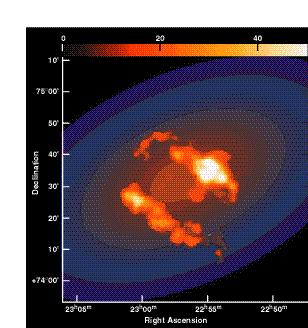Astronomers find Candidates for
the missing Dark Matter Objects
predicted by Cosmologists
Rochester, NY –
Astronomers are reporting the detection of candidate stars in
distant galaxy-sized gas clouds that possibly represent ancient
leftovers from the formation period of the Universe. Dr. Eva K.
Grebel from the Max Planck Institute in Heidelberg, Germany, Dr.
Robert Braun of the Netherlands Foundation for Research in Astronomy,
and Prof. W. Butler Burton from Leiden Observatory in the Netherlands
are presenting these findings today at the American Astronomical
Society meeting in Rochester, NY. Their results are of special
interest since they may account for a significant fraction of
the missing matter in the Universe and help to understand how
galaxies form and evolve.


